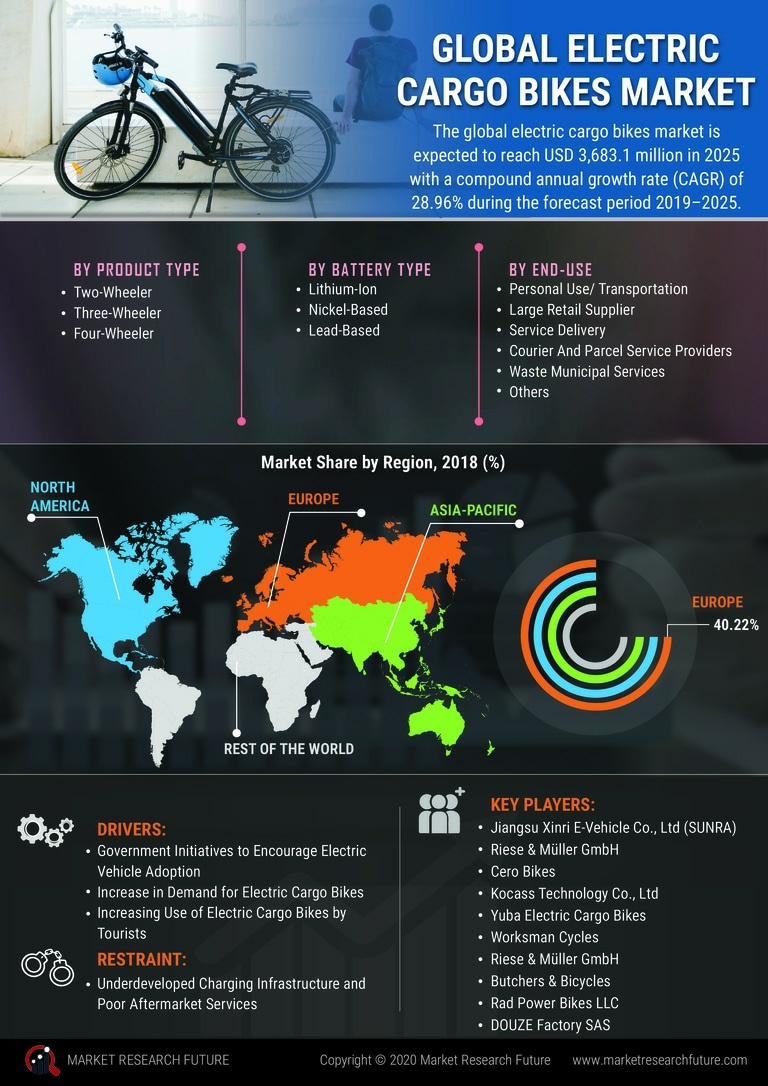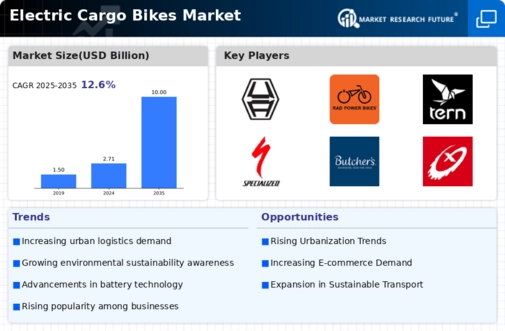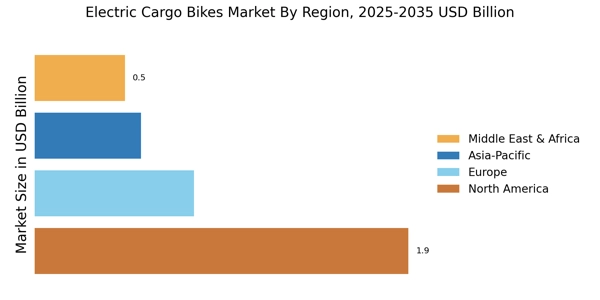The Electric Cargo Bikes Market has been gaining significant traction in recent years, driven by an increase in urban logistics, environmental consciousness, and evolving consumer preferences towards sustainable transportation solutions. With a paradigm shift towards eco-friendly alternatives, electric cargo bikes have emerged as not only practical solutions for last-mile deliveries but also as lifestyle choices for urban residents.
This market is characterized by a blend of established players and emerging startups, all vying to capture a share of the growing demand for efficient and green urban transport. Companies in this space are focusing on innovation, sustainability, and customization of products to meet the varied needs of consumers and businesses, leading to intense competition.
Urban Arrow stands out as a prominent player in the Electric Cargo Bike Market, recognized for its innovative designs and high-performance electric cargo solutions. The company has carved a niche by emphasizing the quality, versatility, and efficiency of its bikes, catering to both individual consumers and commercial enterprises. Urban Arrow has established a strong market presence globally, characterized by a focus on practical solutions that address urban transportation challenges. The strength of Urban Arrow lies in its commitment to sustainable mobility, integrating advanced technologies and ergonomic designs into its products, which allows for seamless navigation in urban environments.
The brand's dedication to customer satisfaction and adaptability to market trends enhances its competitive edge in the global marketplace.
Rad Power Bikes is another significant player in the Electric Utility Bike Market, known for its wide range of electric biking solutions that combine functionality with accessibility. The company has established a diverse product line, including highly regarded cargo bikes that serve both recreational and transportation needs. Rad Power Bikes has a robust global presence, leveraging its strategic marketing and distribution channels to reach a broad audience.
The strengths of Rad Power Bikes are highlighted by its commitment to affordability without compromising quality, appealing to a wide demographic. The company has also engaged in mergers and acquisitions to expand its product offerings and enhance its market position, solidifying its reputation as a leader in the global electric cargo bike landscape. The focus on community engagement and customer-driven product development further positions Rad Power Bikes favorably within the competitive market.
In October 2025, FedEx Express UK rolled out newly designed e-cargo bikes in London to support cleaner last-mile deliveries. The introduction enhances urban logistics efficiency while reducing emissions. FedEx plans wider adoption as part of its sustainability roadmap.
In September 2025, eMotorad launched the G1 cargo e-cycle for deliveries, targeting last-mile logistics with an eco-friendly, compact electric cargo bicycle solution. The launch addresses demand for efficient, low-emission urban delivery options. It could attract small businesses and delivery services looking for sustainable transport alternatives.


















Leave a Comment